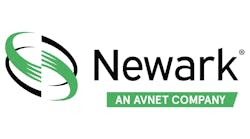By Rich Merritt
Whenever we ask instrument and control engineers what they think about the Windows OS, we get comments all the way from "It's the Wal-Mart of operating systems," to "I would never trust Windows with a process control system." To many, only "real" controllers, such as a DCS or a PLC, can be trusted for the actual control functions.
As it turns out, PC-based hardware and Windows operating systems have crept into many types of "real" controllers, including PLCs, PACs and even—Gasp!—distributed control system (DCS) controllers. These bastions of reliability have succumbed to the lure of Windows-based connectivity and universal open software. Proprietary hardware and operating systems are nearly a thing of the past. Everything is "open" today.
Readers of Control magazine seem to be grudgingly accepting PC-based industrial computers (ICs) into their plants. Or maybe they are buying these devices because they are the best solutions available.
PCs for Process Control? Horrors!
We found many applications for industrial computers (IC), but only a few ICs are actually being used for process control. Test, monitoring and human-machine interfaces (HMI) are the most common applications.
Figure 1. An industrial computer from Rockwell Automation is controlling this oil extraction process in New Zealand. Industrial computers are everywhere in your plant.
of New Zealand does use a PAC for process control—a Rockwell Automation ControlLogix PAC—to control an oil extraction process in the Cheal oil field in western New Zealand (Figure 1). According to Alan Hooker, instrument and electrical engineer with Independent Technology, the contractor that built the station, Austral needed an automated system that could control and monitor everything from oil temperature to equipment performance, while capturing data to comply with regulatory requirements.Austral Pacific Energy
"The complex nature of Cheal's production and information needs demanded a system that could maximize uptime," said Hooker. "The site can only handle around five hours of downtime before it begins to lose heat and, if all heat is lost, it takes up to two weeks to heat the wells up to the desired temperature."
The ControlLogix PAC provides all the capabilities of a traditional DCS system and manages thousands of discrete, process and safety I/O points. "Using ControlLogix controllers helps lower the cost of ownership, provides better flexibility and offers more scalability than a traditional DCS system," Hooker said.
Industrial computers and HMI/SCADA software are posing real competition to DCSs, and the Austral project illustrates that whatever a DCS can do, so can a PAC.
But wait! Isn't a PAC a hybrid PLC? True, but another definition applies: A PAC is an industrial computer with PLC capabilities. Furthermore, many PLCs have adopted a PC-like architecture.
Andrew Craig, automation manager of FlavourCraft in South Africa, uses Beckhoff PLCs to control batches of flavorings and food formulations. "Beckhoff uses standard PC CPUs in their PLCs and I/O stations, which really brings the costs down," says Craig. "This also means that their processing power jumps every year as the CPU speeds increase."
So, is the Beckhoff PLC a PAC? It is getting harder to tell the difference, but it is certainly an industrial computer, and it is being used for process control.
What's an Industrial Computer?
So what is an industrial computer? Why is it different from the $400 desktop PC at Best Buy or Circuit City?
Miko Grika of Beckhoff says, "Office PCs are designed for consumers and are almost never ‘industrial' in any way. Consumer PCs are not designed for plant environments and are more susceptible to heat, vibration and general wear and tear. They're designed for sitting on desks, not for mounting in control cabinets, and there's no guarantee that the consumer PC will be capable of real-time computing, a necessity for many applications. ICs such as those from Beckhoff are designed for real-time computing and microsecond-level performance."
What makes an industrial computer so rugged? Various vendors use sealed faceplates, tough enclosures, solid-state memories instead of rotating disks, low-power CPUs, industrial-grade power supplies and careful layout of components for heat dissipation and shock protection.
What some IC vendors do is replace some of the commercial, off-the-shelf (COTS) components with more rugged ones, such as the Intel SOC (system on a chip), AMD GX Series or the Advantech EVA SOC. In fact, you will probably find such SOCs embedded in devices all over your plant—in PLCs, PACs, Ethernet switches, field instruments, calibrators, I/O modules and DCS controllers. "Embedded systems have become ubiquitous," says Mike Berryman of Advantech. "We find them literally everywhere, especially in the industrial environment."
Most likely, you won't use an office computer as an I/O module, but you might try to use it for a non-critical HMI or test-and-measurement application. Accessories such as shock mounts and air-conditioned enclosures make it possible to use an office PC on the plant floor. You have to be careful to allow sufficient air flow to the fans and keep electrically noisy components and vibration away from the PC, but this method works—probably not in a critical control application though.
ICs instead of PLCs?
Grika points out that an industrial computer offers an advantage over traditional controllers. "In contrast to more traditional controllers such as PLCs, ICs integrate the latest in powerful processors to accomplish more control with less hardware. Advances such as the Intel Core 2 Duo make it possible to bring more centralized control architectures to more applications. The old saying goes that you should never do in hardware what you can do in software and, as PC processor technology marches on, there is exponential growth in the percentage of industrial functions that can be carried out in software running on an IC."
The examples below—an adaptive control system and a handheld HMI—illustrate the powerful process available in an IC.
Since you can change out an IC in a matter of hours, one interesting tactic is to invest in high-quality industrial displays. Rick Tomfohrde, manager of HMI business development at Pepperl+Fuchs, says a "split architecture" approach is worth considering: "Regardless of consumer versus industrial grade computers, the processor engine technology is not particularly costly—less than $500 in some cases—meaning that total replacement is often a trivial maintenance expense."
The same cannot be said of the operator display. These can get expensive—$1,000 or more for a high-quality, large-screen, ruggedized monitor that can survive industrial environments. "Keeping the display/touchscreen independent of the PC processor box allows the more costly piece of the architecture to outlast many changes of the less costly piece," Tomfohrde advises.
Maybe you don't want to upgrade that industrial computer at all. As Berryman points out, "Once the line or process is designed and built, industrial control applications often do not change for years. New capabilities for graphics, services and networking are simply unnecessary. In fact, many control applications could run very well on older x86 processors for decades."
PAC, Panel PC or Portable IC?
It's safe to say that most industrial computers are cut from the same PC-based hardware and software cloth. The point is, industrial computers (in whatever form) offer you a reliable, rugged and relatively inexpensive platform on which to perform control, test, measurement and data acquisition functions. Let's look at some examples.
Semicore Equipment manufactures vacuum coating and etching systems. Matthew Hughes, president of Semicore, says his company abandoned PLCs in favor of PC-based control seven years ago and recently switched to Beckhoff industrial computers and TwinCAT software. The first application of the new Semicore control system was implemented on one of the most complex machines the company ever built. "It was really a trial by fire for the Beckhoff controls because the application was as demanding as it gets in our industry," Hughes said. "The project was to develop a brand new coating system that applied diamond-like carbon, chromium carbide and titanium nitride coating on internal surfaces."
Figure 2. Emerson's DeltaV Mobile Worker uses a Panasonic Toughbook portable computer so operators can walk around the plant with a fully functional DeltaV operator station in their hands.
The project went well. "The new machines equipped with Beckhoff controls have been well-received and helped increase reorder rates," says Hughes.
Impact Drilling's Secure Drilling System uses a PAC and LabVIEW software from National Instruments to track the complete pressure profile of a well during the drilling process while dynamically adapting to well conditions to meet desired drilling parameters. With high-speed monitoring and advanced adaptive control technologies, the Secure Drilling system can automatically control the back pressure at the surface to maintain well control.
"This single HMI and logic development environment of LabVIEW makes deployment of the control system simple because the HMI is built in the same environment as the control system," says Jason Hannam, controls engineer at Impact Drilling.
Emerson Process Management put a complete DeltaV operator station on a Panasonic Toughbook U1 handheld computer, rated as a Class 1 Division 2 device. The DeltaV Mobile Worker (Figure 2) permits operators to carry a fully-functioning, connected operator interface with them into the plant. Wi-Fi or cellular communications connect the handheld to the DeltaV control network via a DeltaV RAS Server and VPN firewall.
When a major DCS vendor uses an industrial computer for control, PC and Windows technology have arrived in the process control world.
Rich Merritt is a Control contributing editor.
Windows in the PlantMany industrial computers use Windows XP, XP Embedded, or Windows CE—operating systems that are relatively solid. Windows CE is often used in embedded diskless systems, such as Panel PCs and PACs, and some HMI/SCADA software (not all!) will run on CE. HMI/SCADA software from almost every vendor will run in Windows XP systems, however. When you consider that some of the biggest vendors in process control use Windows CE and XP in their controllers, it is safe to assume that it must be reliable. However, if you are really worried, just ask the industrial computer vendor what operating system is being used, and pick one that does not use Windows. One recent product—the Power PMAC motion computer from Delta Tau (http://www.deltatau.com/common/index.asp?connectionStr=release) —uses) — usesa PowerPC processor with a Linux operating system, so non-Microsoft industrial computer products certainly exist. |



